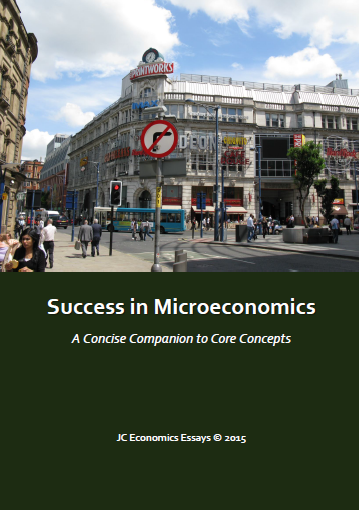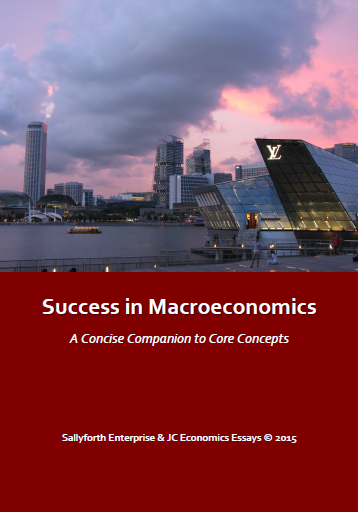This essay topic is on market structures, and in particular barriers to entry with respect to monopolies and perfectly competitive firms. What are barriers to entry? Barriers to entry refers to reasons that deter and prevents
new firms from entering a market. They could be further categorized specifically into
artificial barriers to entry and natural barriers to entry. What are monopolies and perfectly competitive firms? Monopolies refer to firms in markets
with only one seller selling a uniquely differentiated product that have no
close substitutes while perfectly competitive firms are those in markets that
consist of large number of buyers and sellers selling homogeneous products.
In
order to explain the difference in pricing and output decisions between a monopoly and a
perfectly competitive firm, a comparison between the characteristics of both
firms need to be made. This Economics essay therefore talks about the various assumptions
a monopoly and a perfectly competitive firm, before moving on to explain
diagrammatically the difference in their pricing and output decisions.
Monopolies assumes the characteristics of high barriers to
entry, uniquely differentiated product with no close substitutes, one seller or
a dominant firm in a market and generally imperfect information. On the other
hand, perfectly competitive firms assume characteristics of low or almost no
barriers to entry, homogeneous products, large number of buyers and sellers, and
perfect information.
The following diagrams will move on to explain the pricing
decisions of a monopolistic firm and a perfectly competitive firm respectively.
[Insert diagram of a monopolistic firm]
Due to the high barriers to entry, a monopolistic firm is a
price setter and thus is able to secure the profit maximization (or loss minimization) point at MC =
MR, to earn supernormal profits.
[Insert diagram of a perfectly competitive firm]
On the other hand, the low barriers to entry means that a
competitive firm is a price taker as it accepts the price pre-determined by the
intersection of the market demand and supply curves.
Therefore, because it accepts the market price, it produces at an output level at MC = MR, and
controls only its output level to vary its profits.
The high barriers to entry allows monopolistic firms to set
their prices as it is unlikely that there will be an entry of new firms to
reduce the market power and hence pricing influence of that monopolists.
However, perfectly competitive firms are unable to do that since the low
barriers to entry means that new firms could easily enter the market, diluting
each firms’ market power, thus all firms have small market power, resulting in
them being price takers.
In conclusion, barriers to entry are a significant assumption that affects the pricing decisions of monopolistic and perfectly competitive firms, although the other assumptions also play an important role.
JC Economics Essays - H2 A level Economics style, model, sample economics materials - tutor's comments: This economics essay is written in a simple, lucid, clear, short, and direct manner which addresses the economics question posed at the start. This makes this essay answer easy to follow and clear, direct, and easy to mark for the examiner, which are all plus points for this model paper. There is very good use of diagrams to illustrate ideas and points. While a bit short, the conclusion is simple, easy, and direct. The conclusion in this case can be short because this is not a 13, 15 or 25 mark essay question, which would require a longer, more evaluative, and higher value added response as a conclusion. The question is: how can you improve on this economics essay, to make it more of a model economics answer? At the same time, there are other essay styles to write this economics essay, some of which use more words and approach this question from a slightly different angle to answer the question equally well. What do you think? Thanks for reading and cheers.
In conclusion, barriers to entry are a significant assumption that affects the pricing decisions of monopolistic and perfectly competitive firms, although the other assumptions also play an important role.
JC Economics Essays - H2 A level Economics style, model, sample economics materials - tutor's comments: This economics essay is written in a simple, lucid, clear, short, and direct manner which addresses the economics question posed at the start. This makes this essay answer easy to follow and clear, direct, and easy to mark for the examiner, which are all plus points for this model paper. There is very good use of diagrams to illustrate ideas and points. While a bit short, the conclusion is simple, easy, and direct. The conclusion in this case can be short because this is not a 13, 15 or 25 mark essay question, which would require a longer, more evaluative, and higher value added response as a conclusion. The question is: how can you improve on this economics essay, to make it more of a model economics answer? At the same time, there are other essay styles to write this economics essay, some of which use more words and approach this question from a slightly different angle to answer the question equally well. What do you think? Thanks for reading and cheers.



